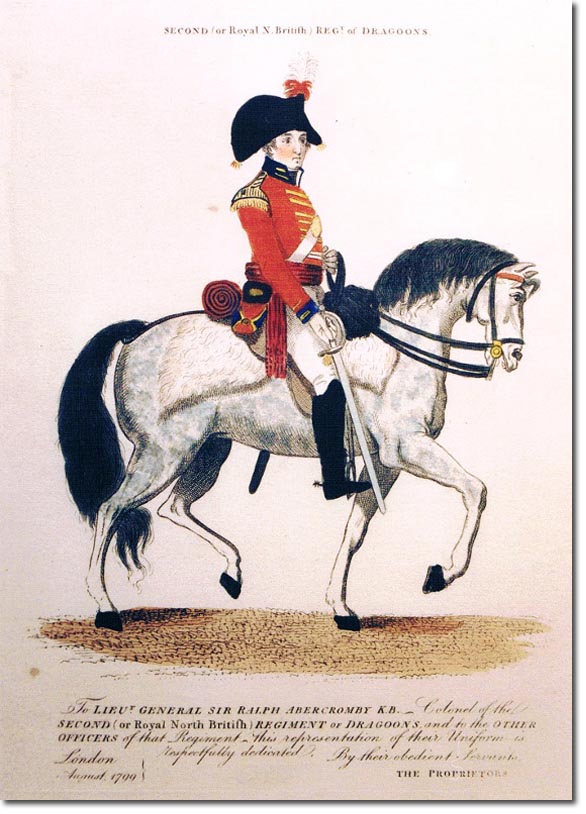|
|


|
|
This print is no.13 from the famous series titled British Military Library, published by J Carpenter & Co of Old Bond Street between 1798 and 1801. The officer of the Scots Greys is depicted in the uniform that was ordered in a warrant of 1796. The officer wears a cocked hat instead of a grenadier cap, raising the question of when were the caps worn and did the regiment do without them for a period. However, a portrait of Sir Thomas Pate Hankin when he was a cornet, shows him holding the fur cap. He was a cornet from 22 July 1795 to 3 Aug 1796 (and CO from 1821 to 1825) so they were worn in 1795 at least. All the prints of the Greys in the early 19th century show them wearing the fur cap. So why was this officer of 1799 depicted in the bicorn hat? Inspection reports and letters to and from the regiment in the 1780s and 90s mention grenadier caps as well as hats so it is safe to assume that both were worn on different occasions. There seems to have been a problem with the fur caps in that they were difficult to keep on the head. An Orderly Book entry for 26 April 1789 has this:
"The troops will have their new caps ready for Mr Hawkes' foreman who comes here on Monday to fit them. The Colonel will give half a guinea to any Sergeant, Corporal or Dragoon who shall contrive the best method of fixing on the Grenadier caps, and easiest for the men, so as in all situations to prevent them falling off." The 1796 warrant called for the coat to have short skirts, buttoned down to the waist and having gold button loops across the chest (white for the men). Epaulettes were replaced by gilt chain wings. Other ranks had shoulder straps of the facing colour with red wings edged with white cloth, and laced or intertwined with iron or brass plates 'of sufficient strength to resist the cut of a sword'. This officer has his crimson silk sash around his waist, tied on the right side. This holds the pouch-belt in place. The belt is white with a gilt oval plate in the middle and a black leather pouch on his right hip. The horse has goatskin housings and a black leather bridle. The embroidered saddle cloth was changed from blue to red, ordered by the King in December 1782, but it a not mentioned again until April 1788 when the book says that the Officers' new saddlery was to be delivered that afternoon 'or as soon as may be done conveniently'. If the embroidered saddle cloths took 6 years to prepare then it would have been disappointing for the embroiderers to hear that in 1896 they were to be abolished in the cavalry. |
Armed Forces | Art and Culture | Articles | Biographies | Colonies | Discussion | Glossary | Home | Library | Links | Map Room | Sources and Media | Science and Technology | Search | Student Zone | Timelines | TV & Film | Wargames